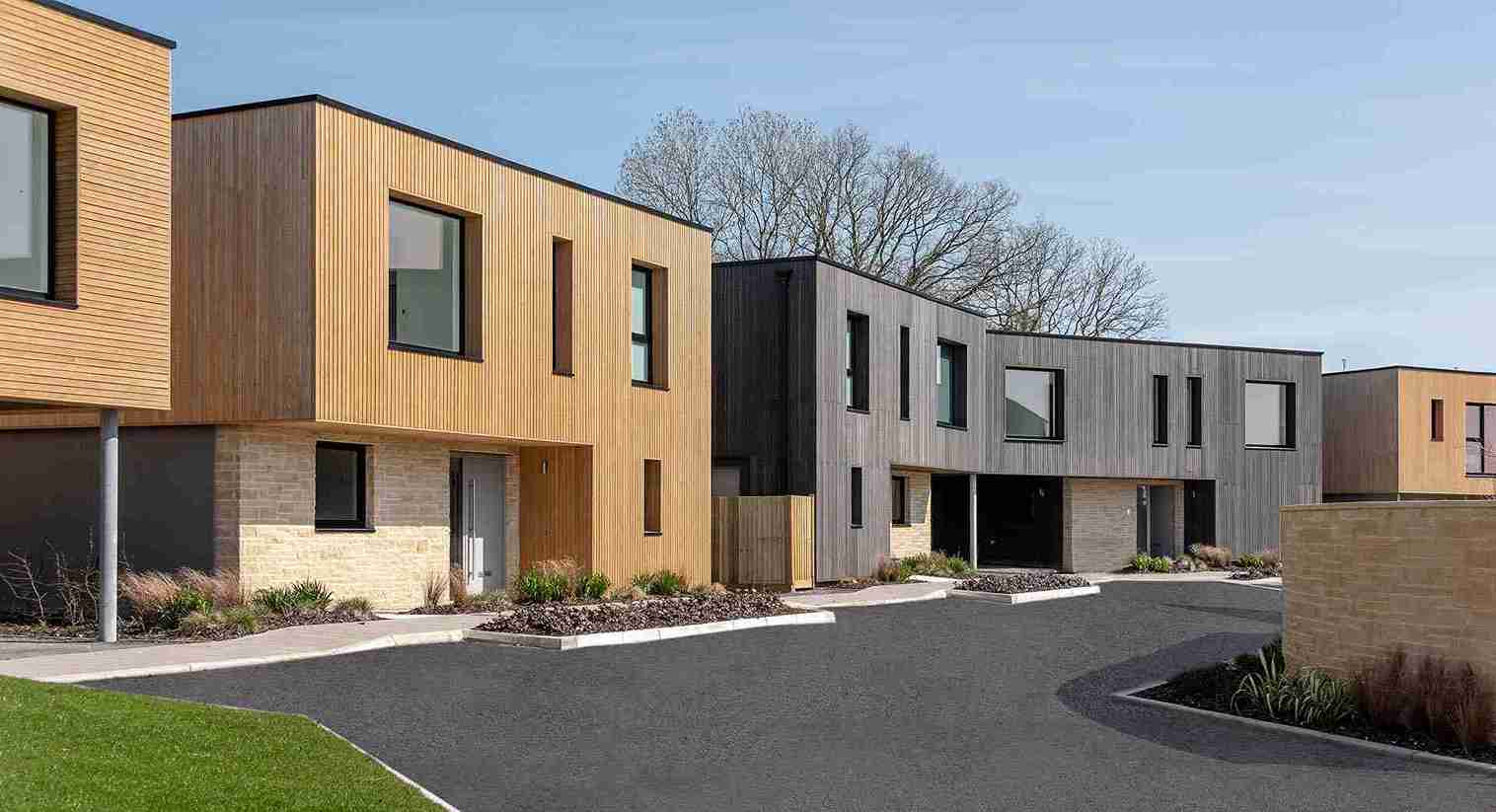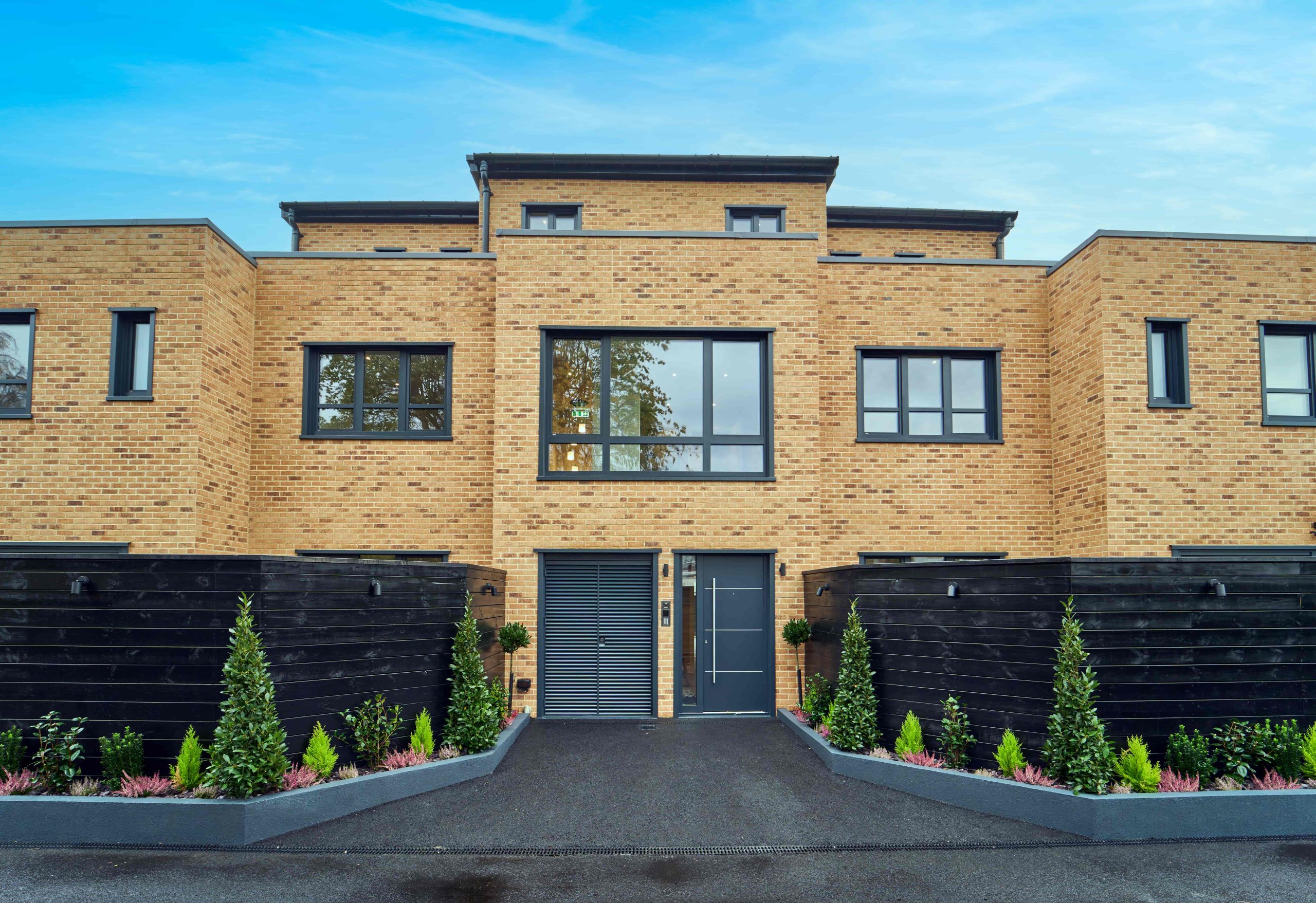What is a Passivhaus Window?
Windows have a versatile role in modern buildings. Of course, this includes the Passivhaus windows too. Thermal efficiency is crucially important, but it is only a part of what windows are intended to do. Wolfgang Feist gave a comprehensive description of the window’s key function in the Passivhaus concept.
“We need to have the high quality so that we get good comfort near the outer walls even without radiators. At the same time, a side effect of quality windows is that they become themselves the radiators of the room”.
In these two sentences, Dr Feist defined the required quality of the Passivhaus windows and triggered (not as a side effect by the way), a new generation of windows, the Passivhaus windows.
Let’s see in more detail the characteristics of Passivhaus windows:
Heat losses
Typically for temperate, cool climate areas (central Europe and most of the UK), Passivhaus windows reduce the heat losses approximately by 50% compared to standard windows. In order to achieve this, we need to reduce the transmittance heat loss coefficient of the glazing unit Ug, the window frame Uf, the thermal bridge heat losses at the edge of the glazing unit – frame and the edge of the window frame – wall.
Typical values for the Ug (UK’s climate) are around 0.5 – 0.6 W/m2K. Recommended values for the Uf are between 0.9 – 1.0 W/m2K.
It is clear that the glazing unit performs better than the frame. Plus, the frame does not contribute to the useful solar gains in winter, so it would be useful to reduce the window frame area compared to the glass surface.
The Uw, inst (for the whole installed window), is calculated based on the following formula:
Uw,inst =[Ug * Ag + Uf * Af + Ψg *Lg + Ψinst * Linst] / Ag + Af
From the parameters Uf, Ψg, Af and the relative to the length of the glass edge Lg, we can derive the indicator Ψopaque which provides a clear quantitative criterion for the losses from the opaque component of the window (frame and edge of the frame and glazing unit, might be simpler to think this as the glass spacer of the window).
Ψopaque = Ψg + (Uf * Af)/Lg
For Passivhaus window certification purposes, the Ψopaque must be less than 0.2 W/mK
A certified Passivhaus window has an “efficiency class” from pH C (certifiable component) up to PH A+ (very advanced component – Ψopaque < 0.065 W/mK)
For Passivhaus certified buildings, the Uw, inst value is climate dependent. In the UK and most of Europe, the Uw, inst has to be less than 0.85W/m2K
Airtightness
A Passivhaus certified window does not have a specific requirement for the airtightness. However, it is highly recommended to opt for Passivhaus windows, which achieve the top airtightness and wind load resistance performance.
Solar Gains
Solar gains are primarily dependent on the solar heat gain coefficient of the glazing unit and its surface area. (Of course, the incident solar radiation on the window is affected by the window’s location, orientation, shading conditions, etc. But these will not be further analysed here).
The solar heat gain coefficient (g) is the percentage of the incident solar radiation which is transmitted through the glazing unit. Typical g values for Passivhaus windows in a temperate cool climate, such as the one in the UK, would be around 0.5 – 0.6, which means that 50% – 60% of the incident solar radiation respectively is transmitted through the glass.
If we would like to reduce the window solar gains, we could specify a lower g value glazing unit. However, lower g values impact the view through the glass as they reduce the light transmission (Lt).
Passivhaus windows can act as radiators of Passivhaus buildings, having a positive contribution to the overall energy balance throughout the whole year. Therefore the solar gains through the glazing unit must be greater than the heat losses through the whole installed window.
Ug – S * g <0
(S -> Annual solar heat gain coefficient – Typical value for central Europe is 1.6 W/m2K)
Thermal Comfort
Contrary to popular belief, the Passivhaus standard was never intended as a standard solely for reducing the energy demand. This is of course, a fundamental – key design principle for the Passivhaus windows.
Occupants of the buildings with standard – conventional windows are used to a number of ways these windows create discomfort. The surface temperature of these windows is lower than the one of the other building components, because they transmit more heat, (than the walls for the example). This entails discomfort in the following ways:
Cold draughts: As the warm air in the room (normally at 20 Celsius degrees) reaches the window, it cools down and sinks to the floor creating cold draughts. For this reason, normally there are radiators underneath conventional windows in order to mitigate this effect.
Temperature asymmetry: As already mentioned, windows are colder than the other building components enclosing the volume of a room. We feel uncomfortable to have one side of our body feeling colder than the other one.
Our body radiates our heat out to the colder surface of the window making us feel colder. We should not forget that half of our perception of warmth comes from the radiant temperature of the surroundings and the other half from the air temperature.
The Passivhaus windows need to address all these discomfort factors. The surface temperature of Passivhaus windows must not differ more than 4.2 Celsius degrees than the perceived temperature of the room. The perceived room temperature is the average of all building components, (surrounding the room), surface temperature and the air temperature, on the proviso that the air speed is no more than 0.1m/s
Arguably the most well-known performance requirement for Passivhaus windows is the the Uw value should be less than 0.8 W/m2K.
This simply derives from the fulfilment of the thermal comfort criterion (less than 4.2 Celsius degrees difference between the surface and the perceived room temperature).
Hygiene Criterion
Apart from addressing the thermal comfort, Passivhaus windows eliminate the hygiene / health risk created by conditions that would enable the growth of mould.
Lower surface temperature on conventional windows means that the relative humidity on the window surface could be high enough even to allow for condensation to occur.
Passivhaus windows need to fulfil the water activity criterion. The maximum water activity must be less than 0.8. Water activity is the relative humidity on the surface of a material or just below it. Water activity higher to 0.8 can lead to mould growth.
A sufficient hygiene criterion, (easier to be calculated), is the surface temperature factor, fRsi, which is a climate dependent one.
For the UK’s climate the fRsi needs to greater than 0.7
fRsi = (Θsi – Θe) / (Θop – Θe)
Can you open windows in a Passivhaus?
YES
Actually, there are many reasons why needs to be at least one opening window in each habitable room. The best option is the tilt & turn windows, which has to do with maintenance and overall performance reasons.
During warm periods, opening the windows is the easiest, cheapest, most effective and environmentally friendly way to cool your house, using purge or cross ventilation. Of course, this applies to climates, such as the UK’s one, where the night temperature in summer, in most of occasions is below 20 Celsius degrees.
People don’t like to miss the opportunity to use windows as a connection to the outside world, so they strongly prefer to chose when they keep the windows open or closed.
Cleaning a tilt & turn window is much easier than cleaning a fixed one.
Monitoring post occupancy evaluation result, we come to conclusion that there sis not a risk of not having sufficiently warm house or having a lot higher energy demand if users keep the windows open. Of course, the only side effect here would be the slightly higher energy bills.
Even during cold periods, it is nice sometimes to have the windows open in order to allow for air, specially in case of a party or an assembly. (Not to mentions here the impact of Covid-19 on this aspect and the importance of purging the stale or even contaminated air).
An opening window could also even save someone’s life in a case of a fire or panic situation (earthquakes).
Based on all these above, it is useful to emphasise on that at least one opening window per room used for living is a prerequisite for Passive House buildings in order to be certified.
To find out more about Internorm‘s range of Passivhaus suitable windows, simply get in touch with us today and a member of our friendly team will be in touch!
- Barratt Homes Adopts Passivhaus Standard for New London Developments - 3 July 2025
- Importance of Acoustic Performance of Windows - 6 September 2023
- Installation of Triple Glazed Internorm Windows - 27 June 2023
Categories: Windows



